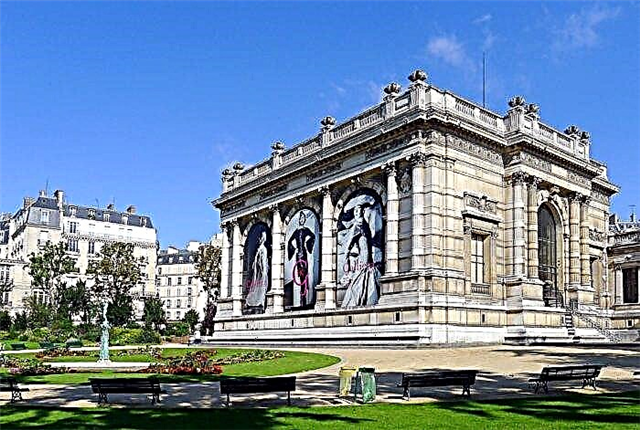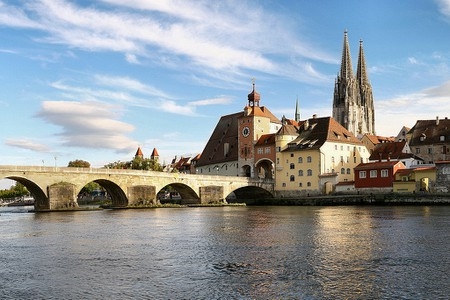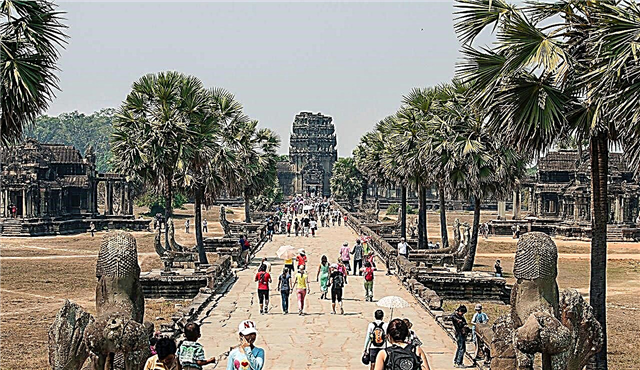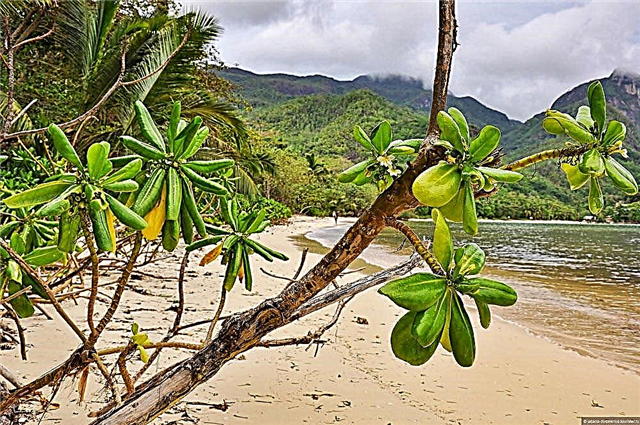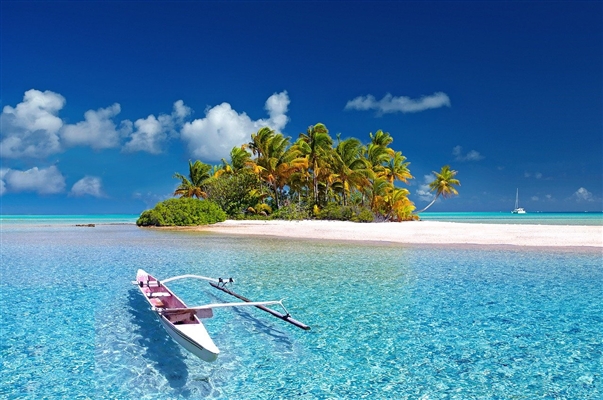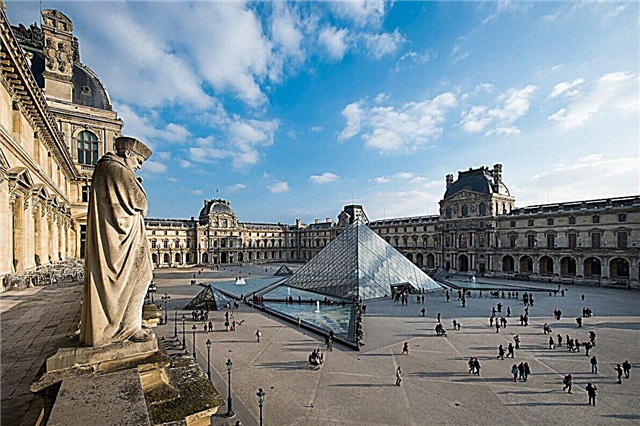Paris is one of the capitals of world culture. Many artists lived and worked here, and they are not forgotten: most of them received personal museums or personal exhibitions. The same applies to the most important milestones in the history of the city and the country. Tourists come to enjoy the romance of Paris, but the cultural program here is the decoration of any trip.
In addition to the well-known Louvre or Montmartre, there are more targeted destinations - for those who love history, rarities, sophisticated delights and unusual exhibits. Anyone will find an exhibition to their liking: from the Palais de Chaillot to the sewer museum. Such excursions are organized at a high level and are perfected to the smallest detail, adjusting to the tastes of a particular guest. It is difficult to leave Paris without impressions and iconic memories.
The most interesting museums in Paris
Louvre
The glass pyramid of the Louvre has already become one of the symbols of France. The vast territory of the museum contains priceless treasures - objects of art from different eras. The halls are divided according to directions, historical layers and geography. The exhibits include paintings, statues, frescoes, jewelry, furniture and more. It is impossible to inspect the entire exhibition in a day. But there is one picture that no one misses - Gioconda Leonardo da Vinci.
Address: Paris, Cour Napoléon
Website: louvre.fr

Orsay Museum
It is located in the building of an abandoned and later restored station. The five levels of the Museum of Fine Arts are categorized by type of work, based on chronology. His collection is one of the most numerous and valuable in the world. The basis of the funds is made up of paintings by the Impressionists and Post-Impressionists. The artistic direction of art nouveau also takes up a significant part of the exhibition.
Address: Paris, Rue de Lille, 62
Website: musee-orsay.fr

Center Pompidou
Opened in 1977. It is the national art center. This is a full-fledged complex, which includes: a museum, a library, exhibition halls, and a research institute. The museum exhibits art objects of various directions - painting, graphics, dancing, and more. The institute is engaged in the study of music and acoustics. The square in front of the center is a place where itinerant artists stage performances.
Address: Paris, Place Georges Pompidou
Website: centrepompidou.fr

Museum of Science and Industry
It is part of the "City of Science and Industry". Here you can learn about the structure of the universe, admire the stars in the nearby planetarium, visit all kinds of exhibitions, divided into scientific sections, visit the cinema, and so on. Part of the exhibition is interactive, that is, these exhibits can be touched and examined in detail. There are also enough unique exhibits - inventions from all spheres of life.
Address: Paris, Avenue Corentin Cariou La Villette, 30
Website: cite-sciences.fr

Orangerie Museum
Picture gallery, opened in 1927. Located in a building that was once a greenhouse. Location - a palace and park complex, from the historical appearance of which there is not so much left. The collection of paintings includes paintings by Gauguin, Cézanne, Picasso, Renoir and others. However, they come here first of all to admire the Oval Hall, where Monet's canvases from the series "Water Lilies" are lined.
Address: Paris, Jardin des Tuileries, Cote Seine
Website: musee-orangerie.fr

Rodin Museum
Founded in 1919. Located in the Bironov palace. Keeps the world's largest collection of Rodin's works. In addition to sculptures, drawings and photographs, the master's personal collection is also exhibited here. He collected art objects for thirty years, and was mainly interested in antiquities. The museum complex is also not complete without a cinema, a library and a souvenir shop.
Address: Paris, Rue de Varenne, 77
Website: musee-rodin.fr

Marmottan Monet Museum
Founded in 1934. The museum changed direction. Initially, it housed exhibitions dedicated to Napoleon. However, the donated collection of paintings forced to move away from this direction. Now in Marmottan-Monet works of impressionists and post-impressionists are exhibited. Past exhibitions have not been forgotten and have survived, albeit in a truncated format. Nowhere in the world is there so many paintings by Monet.
Address: Paris, Rue Louis Boilly, 2
Website: marmottan.fr

Nissim de Camondo Museum
Opened in 1936. Located in a mansion built at the end of the 19th century. Initially, the collection of household items and interiors belonged to the Count de Comondo. He collected her flesh for many years before his death. The museum was named after the son of the first owner. The exhibits have been perfectly preserved. Together they recreate the way of life of the bourgeois family at the beginning of the 20th century.
Address: Paris, Rue de Monceau, 63
Website: madparis.fr

Army Museum
Foundation date - 1905. It is located in the Palace of the Invalides - an architectural monument of the 17th century. The two museums have merged into one. Now there is an exposition of artillery and tells about the history of the army as a whole. The exhibitions are divided by time intervals: ancient weapons, modern times, world wars. There are also separate expositions for artillery, symbols (flags and banners), soldiers and others.
Address: Paris, Hôtel national des Invalides, 129
Website: musee-armee.fr

Jacquemart-André Museum
Opened in 1913. Art Museum, located near the Champs Elysees. Named after the spouses who once owned the building. The collection of paintings includes works by artists of the Italian Renaissance, the French school of the 18th century, as well as the Flemings. Its value is considered the second after the Louvre. When visiting the exhibition, tourists can use an audio guide, where, among other languages, there is Russian.
Address: Paris, boulevard Haussmann, 158
Website: musee-jacquemart-andre.com

Quai Branly Museum
Opened in 2006. Dedicated to the art of the peoples of Africa, America, Asia and Oceania. It is not only a museum, but also an educational center. The goal is to bring the culture and history of other continents to the masses, not to let the heritage of the indigenous people of many countries of the world be forgotten. More than three thousand exhibits are exhibited here, although the funds are hundreds of times higher than this figure. Various themed events are held in the museum building.
Address: Paris, quai Branly, 37
Website: quaibranly.fr

Medieval Museum (Cluny Museum)
It received its common name in honor of the hotel in which it is located. Founded in 1844. His collection is one of the most extensive in the world on this subject. The building is also a landmark and object of study. Its history is a separate chapter of the excursion. The exhibition includes: stained glass windows, tapestries, statues, wooden sculptures, interior items and household items, ivory crafts and more.
Address: Paris, Rue du Sommerard, 28
Website: musee-moyenage.fr
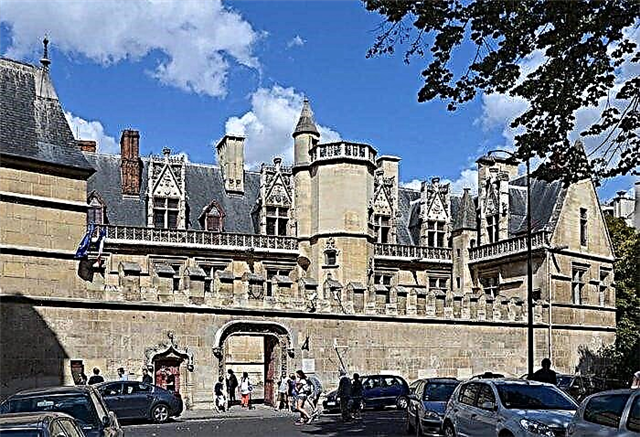
Museum of Fine Arts
The building was specially built for 1900, when the World Exhibition was held. After that, the Small Palace became a city museum. His collection is vast and varied. Although the exhibition area is not so small, it cannot accommodate all the funds. Visitors can get acquainted with Egyptian, Greek and Roman art, as well as with the works of French masters of the 19th century, and study in detail the objects of the Renaissance.
Address: Paris, Avenue Winston-Churchill
Website: petitpalais.paris.fr

Large gallery of evolution
Part of the Natural History Museum. Different expositions are located on four floors: the diversity of the world, human influence on nature and evolution. All types of human activity, their formation in a modern guise fall into the sphere of study and interest. Various ecosystems, species of living beings and their changes are also discussed in detail. Special attention is paid to rare animals and phenomena.
Address: Paris, Jardin des Plantes, 36
Website: mnhn.fr

Guimet Museum
Opened at the end of the 19th century. The name is given in honor of the industrialist who was its founder. Initially, the museum specialized in the religions of the East and the ancient world. Gradually, his collections covered the Asian segment more and more widely. A series of exchanges have made the collection one of the most valuable in the world. Now the direction towards China, Japan and other countries of the region has become the main one.
Address: Paris, Place D Iena, 6
Website: guimet.fr

Fair Art Museum
A private collection that has been replenished over thirty-five years. The museum is located on the territory of the former wine warehouses.All kinds of festivals and events are held here, which allows you to maintain an exposition. The attraction and carousels are real works of art. Most of the exhibits are in working order and in use. There is also an unusual garden.
Address: Paris, Avenue des Terroirs de France, 53
Website: arts-forains.com

Louis Vuitton Foundation
The Museum of Contemporary Art opened in 2014. The attention of the public is attracted not only by the contents of the museum, but also by its appearance. The building is constructed from translucent glass panels, similar to flying sails. The exhibition changes every six months. In most cases, the collection of the Anno family is on display, but there are exceptions.
Address: Paris, Avenue du Mahatma Gandhi, 8
Website: fondationlouisvuitton.fr

Museum of Arts and Crafts
Founded in 1902, it is the oldest technical museum in the old world. The museum funds are divided into seven component parts. Each represents a specific section, such as construction or transportation. Among the exhibits there are both old mechanisms - pioneers in their segment, and more modern ones, which laid the foundation for entire branches of knowledge.
Address: Paris, Rue Reaumur, 60
Site: arts-et-metiers.net

Montmartre Museum
Opened in 1960. It is associated with an association of artists that has existed since the end of the 19th century. The name speaks of the direction: all the exhibits are somehow connected with the area of the same name. The exhibits can be roughly divided into four groups: the history of the region, local holidays, the Paris Commune and Bohemia. The library contains a large collection of French chanson.
Address: Paris, Rue Cortot, 12
Website: museedemontmartre.fr

Carnival
Founded in 1880. It occupies two buildings at once - the mansion of the same name and the house located nearby, but built almost a hundred years later. The main focus of the museum is the history of the city. In the early 2000s, the archaeological museum of Notre Dame de Paris and the Parisian catacombs were added to it. It is currently undergoing serious reconstruction, so it will not receive tourists for two years.
Address: Paris, Rue des Francs Bourgeois, 16
Website: carnavalet.paris.fr

Fragonard Perfume Museum
Opened in 1983. These are two in one: a museum and a shop. For those who wish, perfumery tours of various durations are held here: from ten minutes to a couple of hours. The rest of the visitors can look around, plunge into the world of pleasant aromas, and also buy high quality perfumes at manufacturer prices. Interior decorations are sold in two other sections of the store.
Address: Paris, Square de l Opera Louis Jouvet, 3
Website: musee-parfum-paris.fragonard.com

Picasso Museum
Year of foundation - 1985, location - a mansion in the Mare quarter. The interior of the museum is not inferior to the content, especially after many years of renovation, which ended in 2014. The collection is dedicated to the work of Picasso, and also contains the rarities that he collected during his lifetime. The main exhibition includes paintings, sculptures, notebooks with notes and sketches, prints, collages and much more.
Address: Paris, Rue de Thorigny Hôtel Salé, 5
Website: museepicassoparis.fr

Chaillot palace
Built specially for 1937, when the World Exhibition was held. Later, it became a place of concentration of several museums at once: the navy, man and architectural heritage. The palace is being prepared for reconstruction; in a couple of decades, it has lost part of its funds, which have moved to other buildings. However, significant rarities are still kept here, for example, the Jules Verne medal for a trip around the world.
Address: Paris, 1 Place du Trocadéro et du 11 Novembre
Website: parisinfo.com

Museum of Decorative Arts
It opened its doors to visitors in 1905. One of a kind, as it covers a long period of time: from the Middle Ages to the present. The purpose of the museum is to show all the diversity and breadth of the French lifestyle, as well as the materials used in its creation. There is a huge range of exhibits: from elegant chairs and other furniture, to hair clips and photo wallpapers.
Address: Paris, Rue de Rivoli, 107
Website: madparis.fr

Salvador Dali Museum
Located in Montmartre. The collection of Dali's works stored here is the largest in the old world. It includes about three hundred works: mainly engravings and sculptures. There are also personal items. During excursions, sound recordings of the master's voice are played in the halls. Unlike the buildings of museums of other classics, this one is unpretentious, but reflects the mood of Dali.
Address: Paris, Rue Poulbot, 11
Website: daliparis.com

Grevin Museum
Opened in 1882 on the boulevard Montmartre. This collection of wax figures is modeled on a similar but older collection of Madame Tussauds. In addition to individual historical figures and famous people, the exhibition includes fictional characters and scenes from specific events. The latter most often reflect the history of France. On a permanent basis, the collection consists of approximately five hundred figures.
Address: Paris, Boulevard Montmartre, 10
Website: grevin-paris.com

Museum in the Luxembourg Gardens
Located on the banks of the Seine in a wing of the palace of the same name. The art museum in its modern form has become more of an exhibition complex. There is no permanent exhibition here, but the galleries are not empty: each time new exhibitions appear, both by eminent museums or artists, and little-known to the general public, but deserved a name among colleagues and critics. The government tasked the museum to popularize art.
Address: Paris, Rue de Vaugirard, 19
Website: museeduluxembourg.fr

Balzac House Museum
Year of foundation - 1949. In this building, then located in the suburbs of the French capital, lived the future founder of European realism in literature. He took a pseudonym to rent an apartment here, as he was hiding from his own debts. The museums have collected personal belongings of the writer, as well as drafts and working materials. Sometimes temporary exhibitions are held here.
Address: Paris, Rue Raynouard, 47
Website: maisondebalzac.paris.fr

Sewerage Museum
Opened in 1889. Describes the history of urban sewerage from the first attempts at centralization to the modern period. The exhibits are located underground near the existing sewer system. That is, visitors can see with their own eyes all the principles of the system. From the excursion it becomes clear about the origins of the construction of the catacombs, as well as about the methods of water purification.
Address: Paris, Pont de l'Alma, face au 93 quai d'Orsay
Website: egouts.tenebres.eu

Fashion Museum
It is open to tourists only part of the time - during the period of temporary exhibitions. The rest of the year, the exhibits are placed in storage facilities, where they are kept under a certain temperature regime. The collection contains about seventy thousand exhibits. They can be used to trace the development of fashion, the emergence of certain styles and trends. For the most part, the museum represents the world of high fashion, but there are exceptions to any rule.
Address: Paris, Avenue Pierre 1er de Serbie, 10
Website: palaisgalliera.paris.fr
